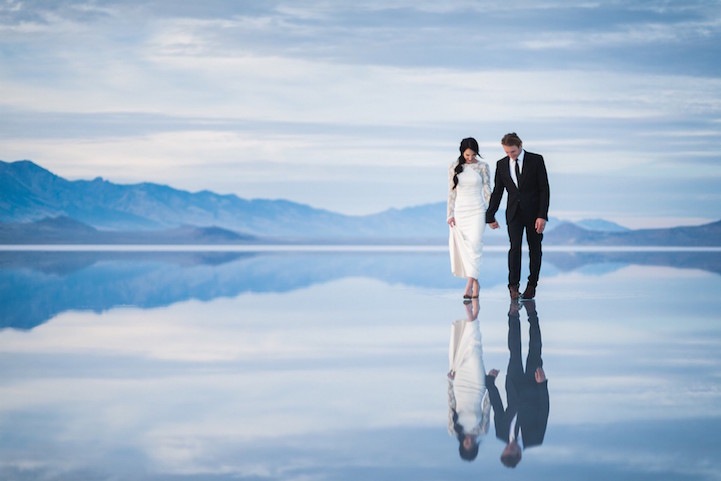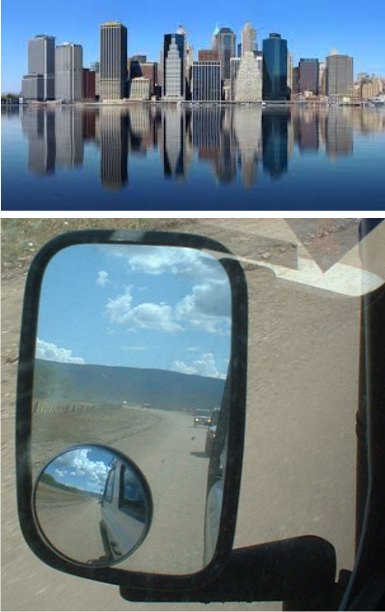
|

|

|
|
Salt FlatsThis image is from the Bonneville Salt Flats in Utah. An inch or two of rainwater accumulates on the surface and we get that cool mirror effect.Bonneville is not unique. There are at least a dozen major salt flats. Famous ones are in Bolivia, Argentina and Iran. I found these pictures by googling Salt Flat Reflection. |

|
In this image, also from Bonneville, the water mirror must be more than fifty miles wide.

|
Can you see that the mirror is optically flat? It happens on salt flats and it happens in deep water too. This city scene shows that the reflected image is the same size as the source image. Vertical building edges continue through to the reflection in a straight line. That mirror is very definitely flat. The Earth is curved, so the reflection must be smaller and slightly distorted. Parallel lines in the scene cannot remain parallel in the reflection. But we can see the reflection is true. The water mirror is optically flat. That means water is flat. But the Earth is round. Gravity makes water stick to the Earth so its surface conforms to the Earth. So how do we get a flat mirror? |

|

|
|
|
|
|
|
|
|
|